► Polestar 2 review – 2WD and AWD
► We test the Swedish EV in the UK
► Available now, priced from £43,150
Polestar is the all-electric spin-off brand from Volvo and the Polestar 2 EV is the only car in its range – until the bigger Polestar 3 arrives later this winter. Our Polestar 2 review is based on numerous test drives and incorporates our findings from the CAR magazine long-term test. We think it’s one of the best EVs on sale.
A slightly-high-riding, five-door fastback, the Polestar 2 arrived in UK showrooms in 2020 with its flagship dual-motor model, complete with all-wheel-drive and a brawny 402bhp. This was joined in 2021 with a more sedate but still-impressive single-motor, front-wheel-drive variant, offered with small and large battery pack sizes.
Priced from £43,150 (or £534 a month on Polestar’s own lease scheme), the 2 is a rival to the Tesla Model 3, Audi Q4 e-Tron and anything else that dares to breach the electric SUV/crossover realm, including the genetically-related Volvo XC40 Recharge.

We’ve driven both the single- and twin-motor versions on UK roads, including a shakedown on track to see what the latter’s Performance upgrade pack is really capable of when let off the leash. Read on for our detailed Polestar 2 review rated by CAR magazine’s expert road testers.
The best EVs: our guide to the best electric cars
What exactly is the Polestar 2?
At 4.6m long, this hatchback is roughly BMW 3-series-sized – a chiselled notchback that looks slightly on tip-toes, owing to the high-riding Geely group CMA architecture that also begat the tall Volvo XC40 crossover and forthcoming Lynk & Co 01. If it’s giving you déjà vu, that’s because the 40.2 concept car from sister brand Volvo was the original inspiration for the Polestar 2.
Build quality is impressive throughout, with tight shutlines, lustrous paintwork and neat detailing like frameless door mirrors. A large panoramic sunroof is optional, bathing the cabin with soft, diffused light; there is no sunblind and Polestar says a UV layer removes the majority of heat soak – and at nighttime the brand’s North Star motif is projected onto the glass overhead, a typically neat design touch. There’s a lovely, calm, Scandinavian ambience throughout.
It’s a decent package for front-seat passengers, but things are more cramped in the back row. The rear doors are rather small and watch out for a large ‘transmission tunnel’ bisecting the rear floor, making this effectively a four-seater.
Another gripe is the electrically operated tailgate that lifts at the press of a button located a long way down by the bumper. Taller folk will have to stoop to open it that way (see below), although you can at least waggle your foot under the back bumper instead – gesture control is standard on even the cheapest version.

Of course, you can also just open it from the key (a disappointingly cheap black plastic-clad affair – a Volvo key but weirdly shorn of any trim, as if it’s unfinished). This will be less of a problem once Polestar finally activates the phone-as-key software in the works.
The sensibly shaped boot is 364 litres in capacity, which isn’t a huge amount bigger than a Volkswagen Golf’s loadbay – but you do get a 41-litre compartment beneath and there’s a small 35-litre ‘frunk’ (or front trunk) for storing your cables and charging paraphernalia under the bonnet.
The Polestar 2’s rear seats split 60:40 and there’s a ski hatch for stowing longer objects. It’s a pretty practical car and will slot into family duties easily, though it’s worth noting that Polestar predicts a heavy fleet/business bias for its latest model. This is no surprise, since the UK’s company car tax relief makes EVs a no-brainer with dramatically lower benefit-in-kind tax.
The convertible EV: meet the Polestar 6
What’s the 2’s interior like?
Settle in and you’ll be at once familiar with the Scandi chic and Volvo overtones, yet surprised by the sheer modernity and freshness of the Polestar 2’s cabin. Materials and build quality are top-notch regardless of whether you’ve got a basic version or a top-spec car – it feels on a par with Volvo interiors, and they’re from the top drawer. Yes, you’ll spot a few telltale parts shared between Polestar and Volvo (steering wheel controls, electric window switches and suchlike), which is just fine by us.
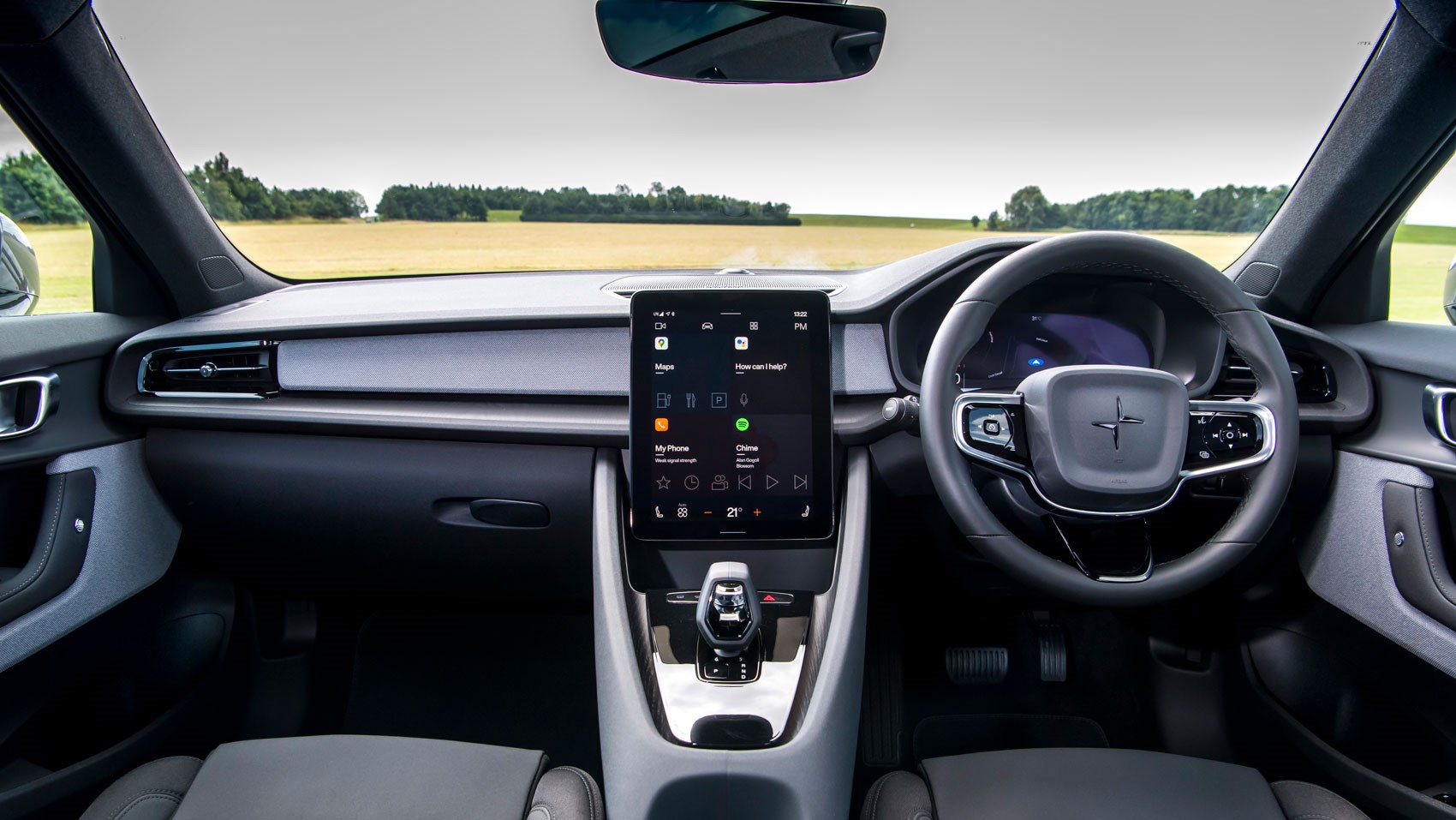
Polestar has struck its own interior vibe, as you’d expect when a designer – Volvo’s former design chief is Thomas Ingenlath – is Polestar’s CEO. It’s largely achieved through the use of twin large digital screens for the instrument panel and central touchscreen. In a bold move, Polestar is premiering the world’s first Google Android operating system for its infotainment and it clears the way for a very minimalist cabin. Sound familiar, Tesla?
The Polestar 2’s digital design and touchpoints are very simple and unobtrusive. It passes the not-having-to-read-the-manual test with ease. Just a pity that everything’s so dark and gloomy – if you fancy beige leather and brown wood to add some visual relief you’ll need to fork out a further £4000.
You’ll appreciate the supportive seats that continue the decades-long Swedish love affair with comfort, and the ergonomics are largely spot-on. There is a terrible over-the-shoulder view, however, thanks to that pillarbox rear window from the notchback silhouette, but a standard rear-view camera and three well-positioned, frameless mirrors mean you never really worry, even when parking. The bird’s-eye-view panoramic parking camera really helps here.
Our only other serious complaint is the central cupholder position. Okay, it’s not as if there’s a manual gearbox that needs frequent gearchanges, but a tall oat milk latte beaker will prove to be a pain in the proverbial every time you want to touch something south of the main screen. If you need two cupholders for you and your passenger, you’ll have to flip the centre armrest open, depriving you and your passenger of somewhere to lean an elbow…
What’s Polestar’s Google Android operating system like to use?
It works well. Polestar’s infotainment system is a step change over the Volvo legacy set-up. Mapping is leagues better, with clear, pared-back cartography based on Google Maps and clever integration of charging point information, while the general UI and layout of the screen is straightforward and easy to use on the go. Voice recognition isn’t perfect, but worked 90% of the time for us – and will improve over time, Polestar pledges. Your kids will love the opportunity to bark ‘Hey Google, tell us a joke!’
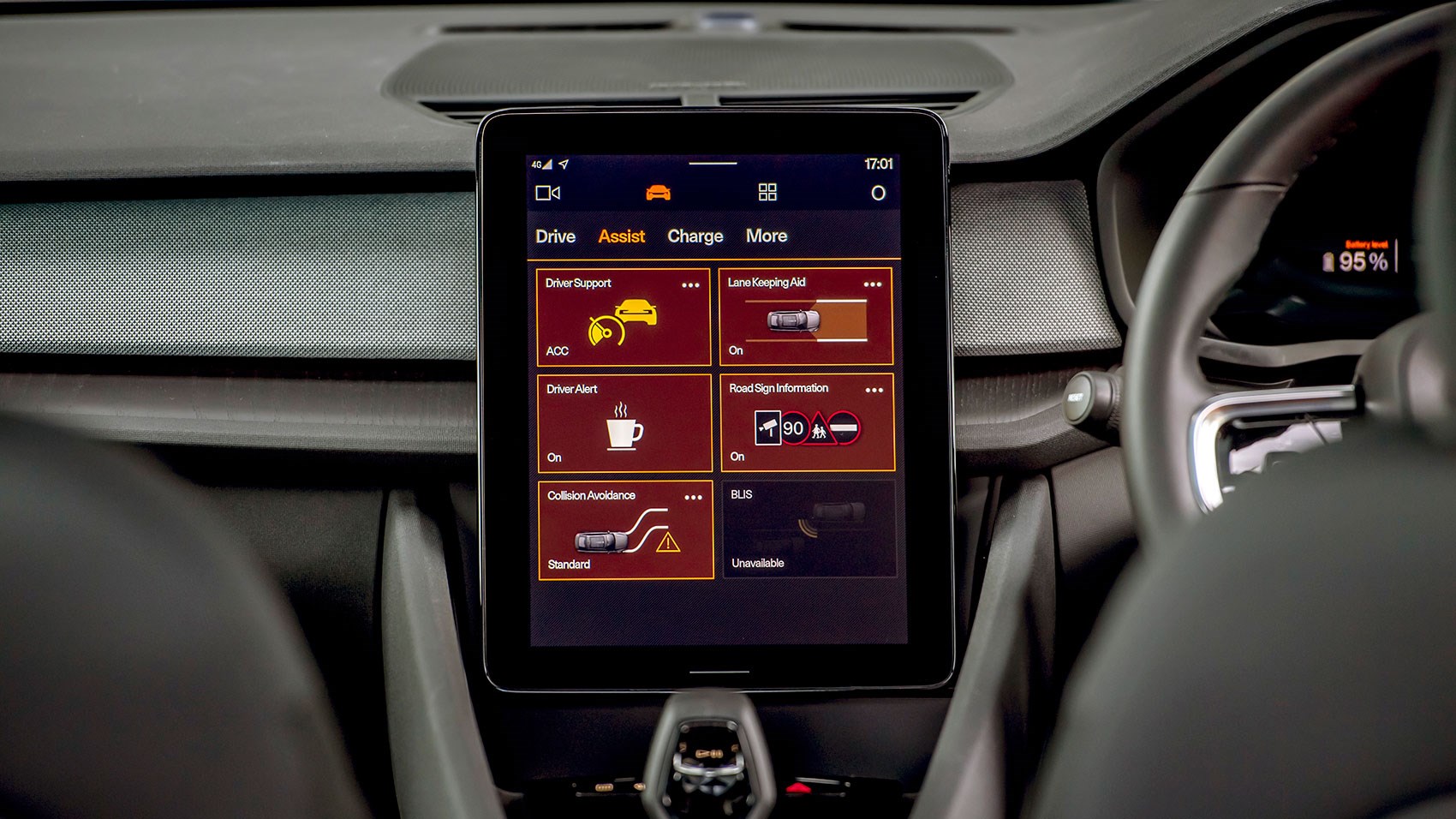
The digital services offered currently include Spotify for music streaming, Google Maps for navigation and Google Assistant for asking inane questions, jokes and general queries. Polestar has since added a function where your smartphone becomes a digital key fob, and further features in the works include Netflix and more communication services.
Disappointingly, Apple CarPlay wasn’t ready in time for the first deliveries, but it’s available now, and regardless Polestar assured that all phones can sync with the Android Automotive OS from day one. Over-the-air (OTA) updates mean your car’s digital heart will adapt and grow over time, which is a neat touch.
Polestar 2 review: tech specs and EV range
The 2’s key electric car stats are projected to the outside world by some rather cheap-looking stickers behind the front wheelarch. The long-range car has a 78kWh battery slung down low along the spine of the car (explaining the lack of a flat floor), and it’s big enough for the following key EV stats:
- Battery capacity: 78kWh
- Battery type: Lithium-ion 400-volt
- WLTP tested combined range: 298-335 miles
- Home charging (AC): Up to 11kW
- Rapid charging (DC): Up to 155kW
- Rapid charging time: 35 minutes 10-80%
The numbers suggest great reassurance, but not one matched by our experiences so far. Reaching 200 miles in mixed driving conditions is a stretch even for the bigger-batteried long-range Polestar 2 and 250 seems to be nearer the mark if you stick in town. Tesla’s Model 3 still has the edge here by reducing range anxiety:
- Model 3 Standard Range Plus: 254 miles
- Model 3 Long Range : 348 miles
- Model 3 Performance : 329 miles
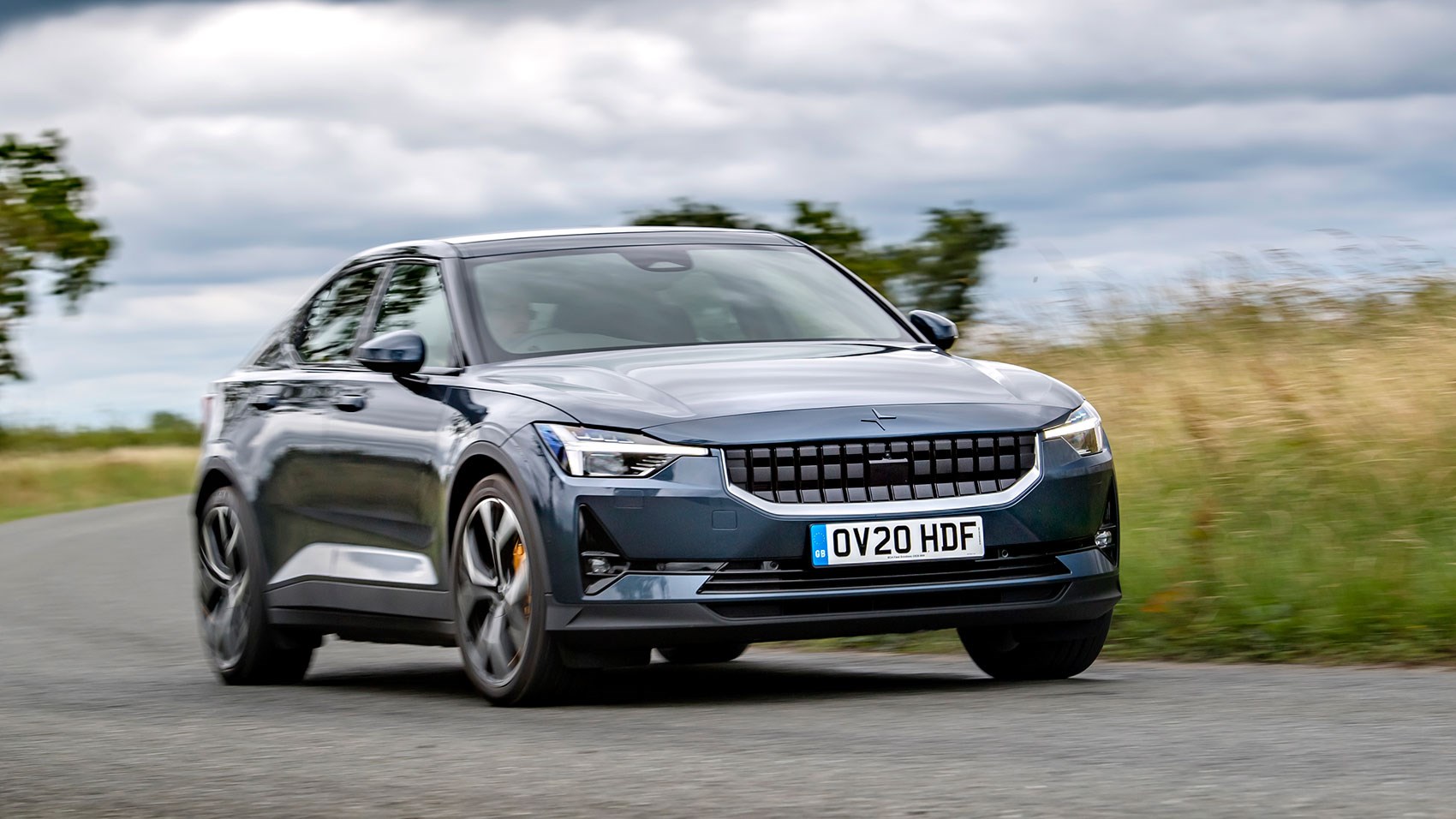
Elon Musk’s American EV will go further on every charge, according to the official figures, and part of that must be attributable to the Polestar’s weight, which comes in at a chunky 1994-2123kg. That Geely/Volvo group CMA architecture isn’t a bespoke electric platform, remember; it’s engineered to accept petrol, diesel and hybrid powertrains too – you’ll have to wait for the Polestar 3 and Polestar 4 for more bespoke electric car technology from the Swedish start-up.
If you’re only planning shorter trips or want to save yourself a few quid, there is also a short-range Polestar 2 version that comes exclusively with a single motor and front-wheel drive. Despite having a lower-capacity battery pack, interior space is no different. Once again, you’ll struggle to get anywhere near these official figures if our experiences on a mix of roads are to be believed:
- WLTP tested combined range: 273 miles
- Home charging (AC): Up to 11kW
- Rapid charging (DC): Up to 116kW
- Rapid charging time: 35 minutes 10-80%
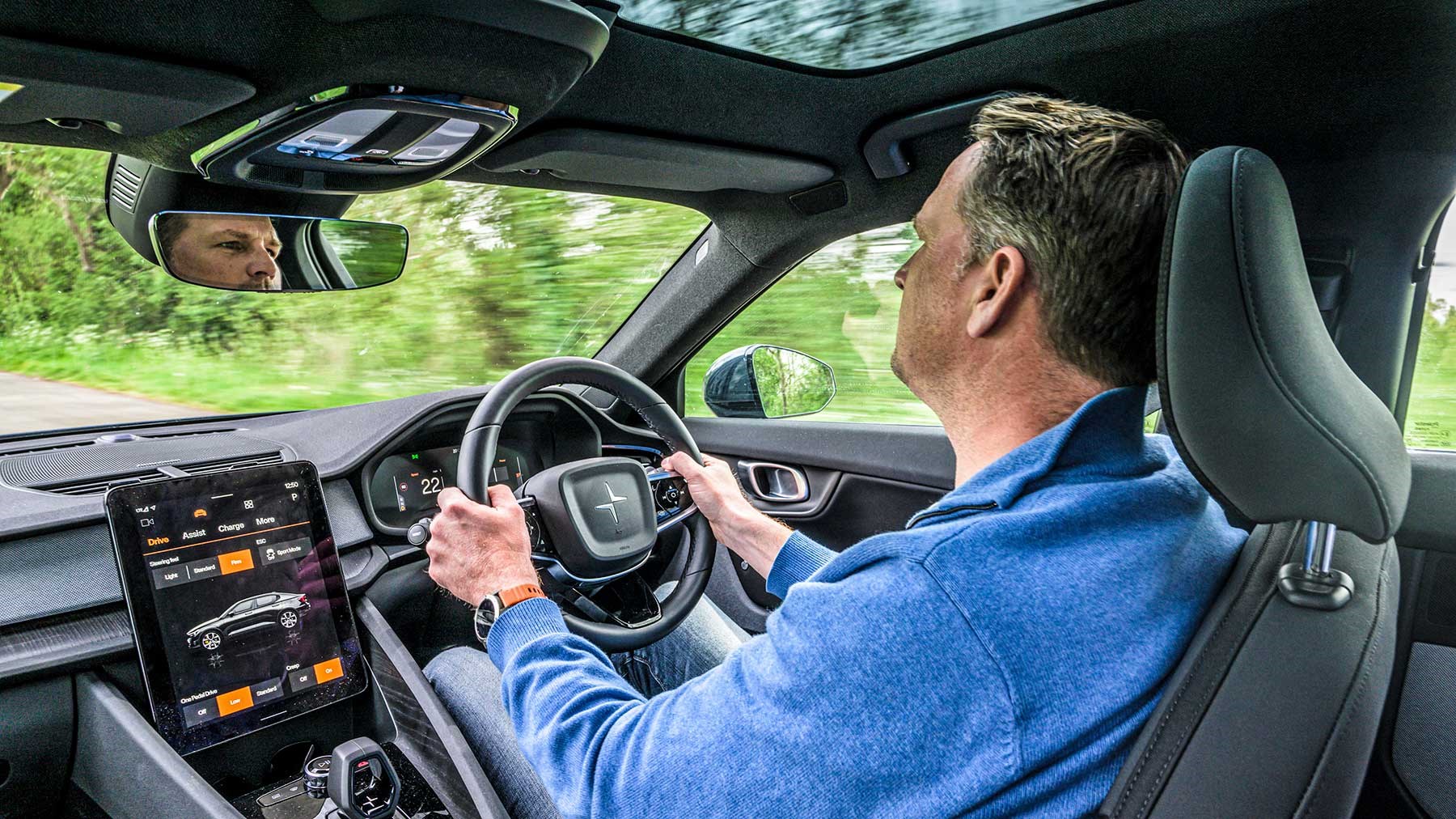
Enough specs! How does the Polestar 2 drive?
That first batch of EVs off the boat from China (this car is built by parent company Geely in Luqiao, south of Shanghai) arrived later than originally planned, but only just. Boss Ingenlath admitted the company had been lucky because the scheduled start of production occurred just as Chinese coronavirus restrictions lifted, meaning there was only a fortnight’s delay to its European launch back in summer 2020.
Arguably the most interesting version for enthusiasts is the dual-motor equipped with the Performance Pack, a £5000 upgrade that Polestar reports is tempting most early buyers. It includes larger 20-inch wheels, uprated Brembo brakes with larger, vented discs and four-pot calipers up front, and manually adjustable Öhlins dampers, whose dualflow valves have a greater range of response than the standard monotube items.
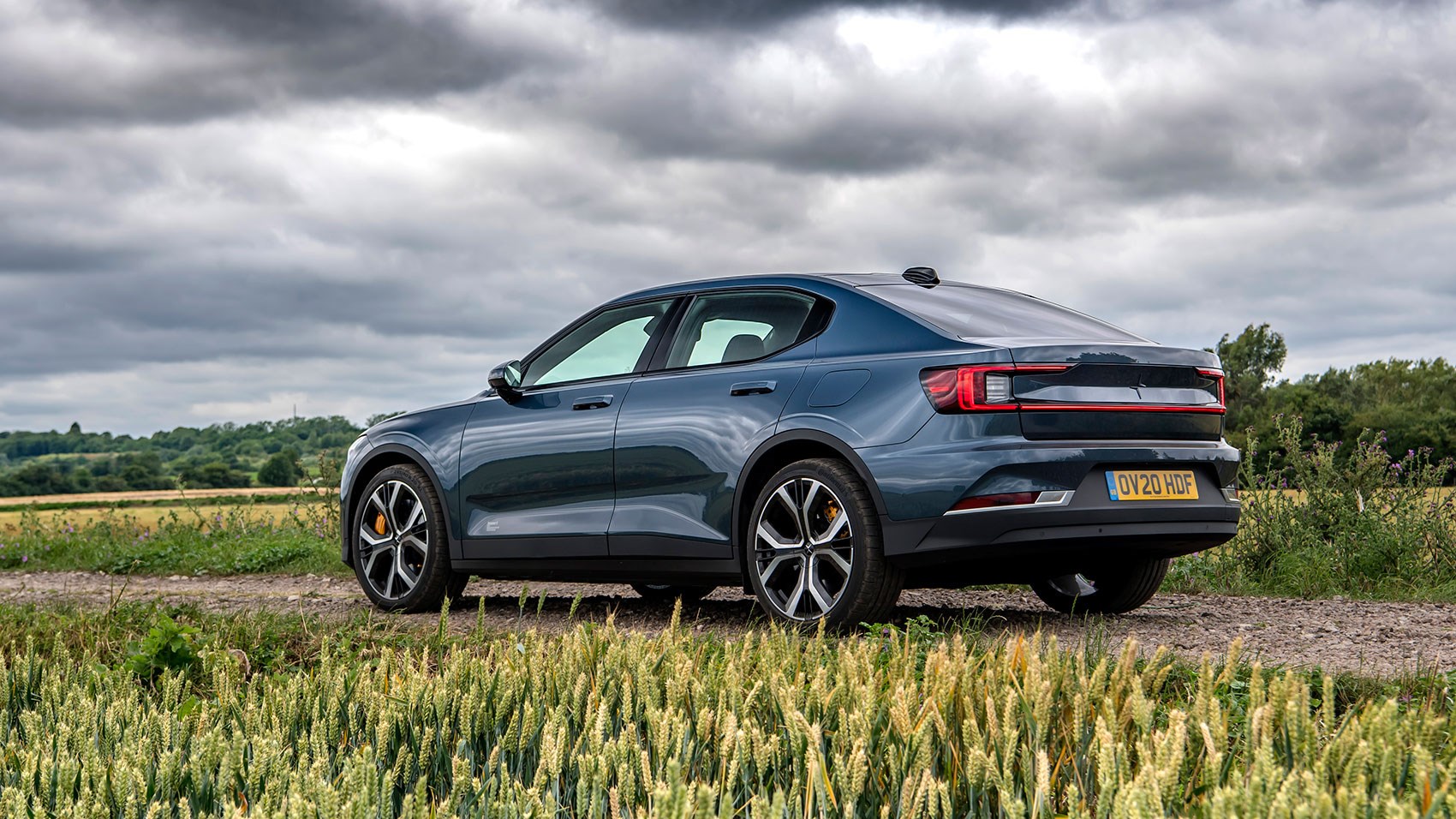
Most customers will have them set up just once by a dealer, but they’re relatively easy to adjust without tools, our Polestar 2 review found. By default, they’re set on the eighth click out of 22 for a middling damper set-up, though we’ve now tested the car in both extra-firm and extra-soft set-up. Such complexity is not a problem with the single-motor cars; they don’t get the option of fancy dampers and brakes.
On the road in the Polestar 2
Regardless of model, that rather awful, cheap black key can remain in your pocket when you approach the car and it unlocks automatically. More impressive is the total absence of a stop/start button; simply sit down, foot on the brake, select D on the attractive, stubby gear selector and you’re off. It’s a wonderfully simple start-up routine that’ll make you smile every day. (Rather like a Tesla’s.)
Poke the accelerator and it’s immediately obvious the dual-motor variant with Performance pack is a very fast car. The Polestar 2’s 0-62mph time of 4.7sec says it all really – there’s instant, pinned-back-in-seat acceleration from the two 150kW motors (one on each axle for all-wheel drive). In dual-motor models, traction is peerless and you rarely struggle to deploy all that grunt; the two-wheel drive 2 is a little livelier.
That’s a combined total output of 300kW or 402bhp and together with a brutal 487lb ft of torque there is thrilling, fast and feisty shove available at all speeds. All electric cars perform well at the traffic light grand prix, but the Polestar 2 is properly quick even for a burst of speed up a motorway incline. It’s all highly repeatable, too.
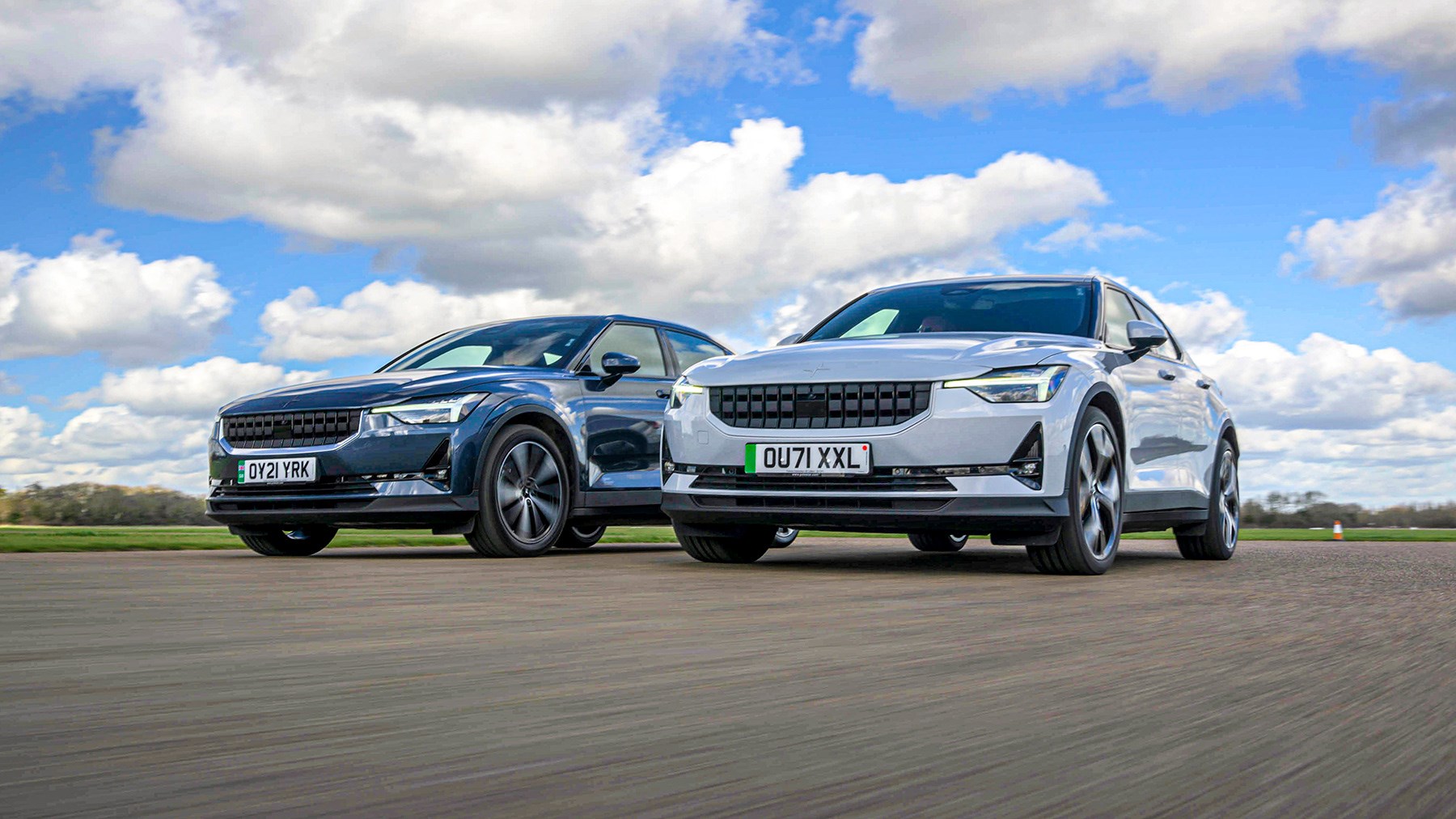
We’ve tested all the different specs available in our Polestar 2 review, often back-to-back (above). With 221bhp regardless of battery pack, the single motor’s 7.4sec 0-62mph time is nowhere near as impressive. There’s still ample pace in most scenarios, although a basic Model 3 would destroy it in a straight line. B-road overtakes should hold no fear, although acceleration does tail off as you’re approaching the national speed limit in the single-motor Polestar 2.
While we’ve got few complaints about the acceleration, the way it’s delivered isn’t ideal. Torque steer is always a right-foot flex away in the two-wheel drive model, the steering wheel twisting in your hands even when accelerating at speed. This is exacerbated by camber changes in the road. The all-wheel drive, twin-motor models lay down their power more efficiently and with less fuss.
What about the Polestar 2’s ride and handling?
A combination of all-wheel drive and clever energy management means you’re never left wishing for better traction in a Performance Pack-equipped dual motor model. All that thrust is deployed intelligently and the Polestar 2 is as much fun on a B-road blast as it was refined and serene on the dual carriageway. This duality of purpose defines the car’s character. Single-motor models aren’t quite so enjoyable, the standard dampers helping it feel less agile and there’s no rear motor to help push you out of a corner and tighten your line.
Regardless of model, our Polestar 2 review found the ride quite busy at times; it’s well judged during most conditions, but becomes thuddy on that peculiar black-top British back roads specialise in. The regular 19-inch alloys and standard suspension is a better bet if you value comfort over cool, with the Performance Pack bringing tighter body control at the expense of initial bump absorption. Yes, you can tweak them to slacken them off, but that’s not a simple case of pressing a button (you’ll need to get your spanners out and adjust the Ohlins dampers themselves, remember…).

We’re pleased to report that Polestar hasn’t gone overboard with digital settings: you can adjust the weight of the steering (Light, Normal, Sport) and turn Creep on or off, but that’s about your lot. The steering isn’t exactly feelsome and we found the Sport setting artificially heavy, but you quickly adapt. It feels more planted and grown-up than the hyper-pointy Tesla Model 3 rival.
Ease off on a motorway cruise, and the Polestar 2 is hushed and refined, helped by a slippery 0.278 drag coefficient slicing through the air with minimal fuss. With no combustion clatter and little road noise, it’s a relaxing environment in which to enjoy that luxurious interior and high-quality stereo.
All versions get Google Assistant, which is one of the best voice recognition systems we’ve yet tried in a car – and if you’re a Google fan, your whole digital life will follow you seamlessly into the car, including playlists, diary appointments and favourite journeys.
This is hardly your regular track-day car, but the Polestar’s adjustable dampers meant we couldn’t resist seeing how it performed on the billiard-table smooth tarmac of the Goodwood Motor Circuit. Before setting off, we manually adjusted the Ohlin’s dampers to click 2 for a more sporting ride.
The result? An even more planted ride when pushed hard on track. While the ride is a little busier at normal speeds, the main difference comes when the car is pushed closer to its limits. The increased firmness results in a car that’s pointier on entry, and even more adjustable mid-corner. With the dampers cranked up to their firmest setting, the Polestar 2 rolls less and has a vice-like grip on the tarmac, so you can tap into the deep reserves of electric torque earlier.
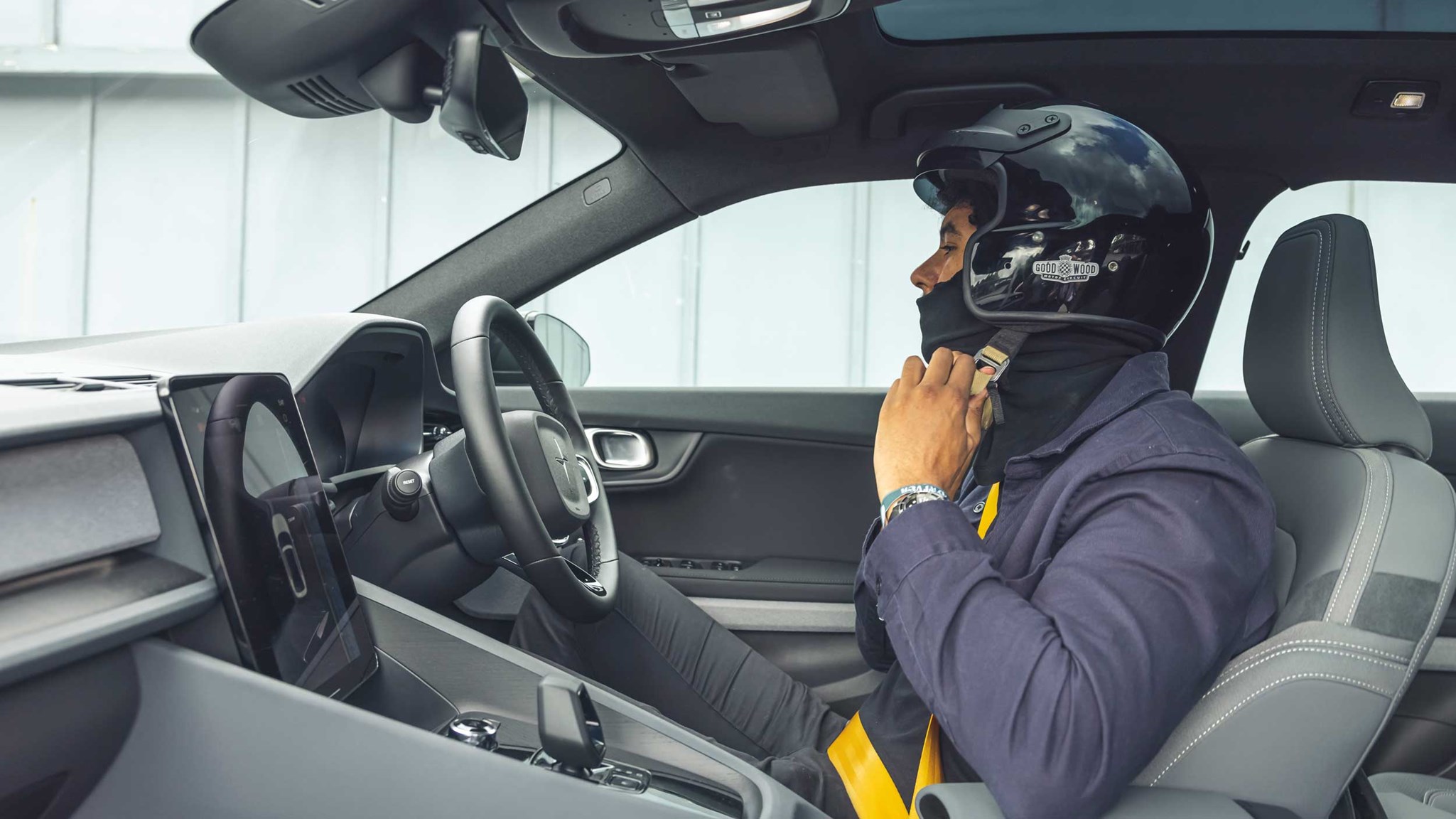
But it’s clear why the Polestar 2 doesn’t ship like this – because it doesn’t need to. It’s only with far more aggressive driving that the softer modes really expose themselves. Our advice is to stick with roadgoing settings.
What’s the Polestar 2 BST Edition 270 like?
For those who worry that the EV performance cars are all about bhp figures and 0-62mph times, the Polestar 2 BST Edition 270 claims to offer something different. Yes, it has the same 469bhp dual-motor powertrain as the ‘regular’ Performance Pack version, but there are some key differences.
Aside from the large stripe and unique Battleship Gray satin wrap (both optional), the BST Edition 270 gets a lowered ride height (-25mm), as well as a front strut bar (for greater stiffness) and unique 21-inch black alloys inspired by those on the Polestar 1. In addition, the Ohlins dampers differ from those fitted to the Performance Pack model in a number of ways.
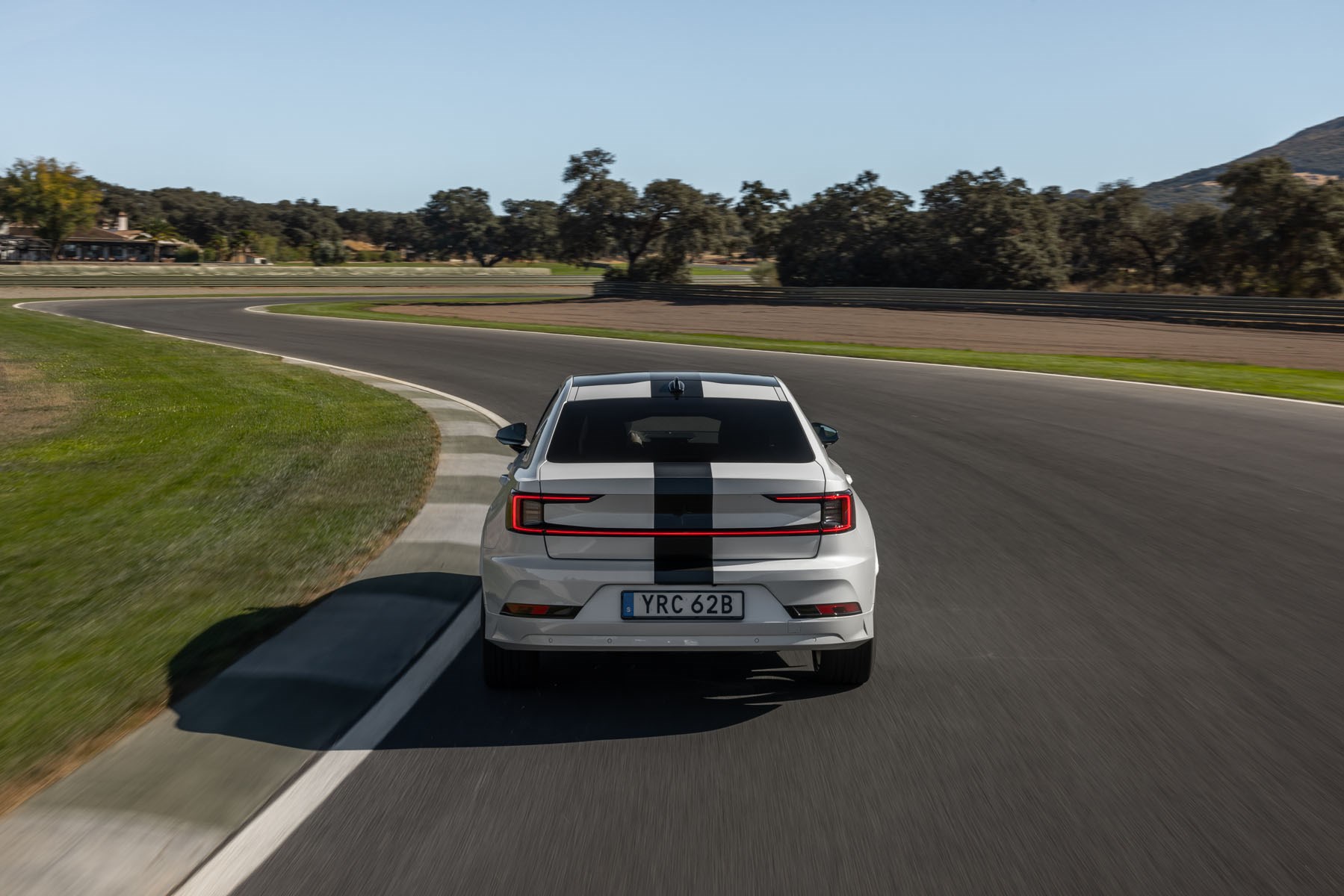
For starters, the whole set-up is 20% stiffer, while a hose-mounted gas reservoir in the frunk allows for individual compression adjustment at the front (rather than compression and rebound being tweaked together). The benefits of which include greater fine tuning, as well as improved damper responses and the ability to operate at lower gas pressure (both helping comfort as well as handling). What’s more having the adjusters positioned under the bonnet not only looks really cool, but is also more accessible.
On the very occasionally bumpy roads around Ronda, Spain, the 7-7,7 standard damper settings showed admirable body control and compliance – deeply impressive when you realise the Polestar 2 weighs in excess of two tonnes. Meanwhile, on track (where we got to fiddle with the dampers settings), the potential of combinations is endless thanks to 22 damper increments that deliver up to a 20% swing in stiffness.
Starting off with the road set-up, there was plenty of grip yet turn in at the front was a little slow and vague, so we stiffened up the dampers all round. Like the Performance Pack models, this requires jacking up the rear and reaching under the front wheel arch, but this time there’s also the aforementioned compression adjusters under the bonnet.
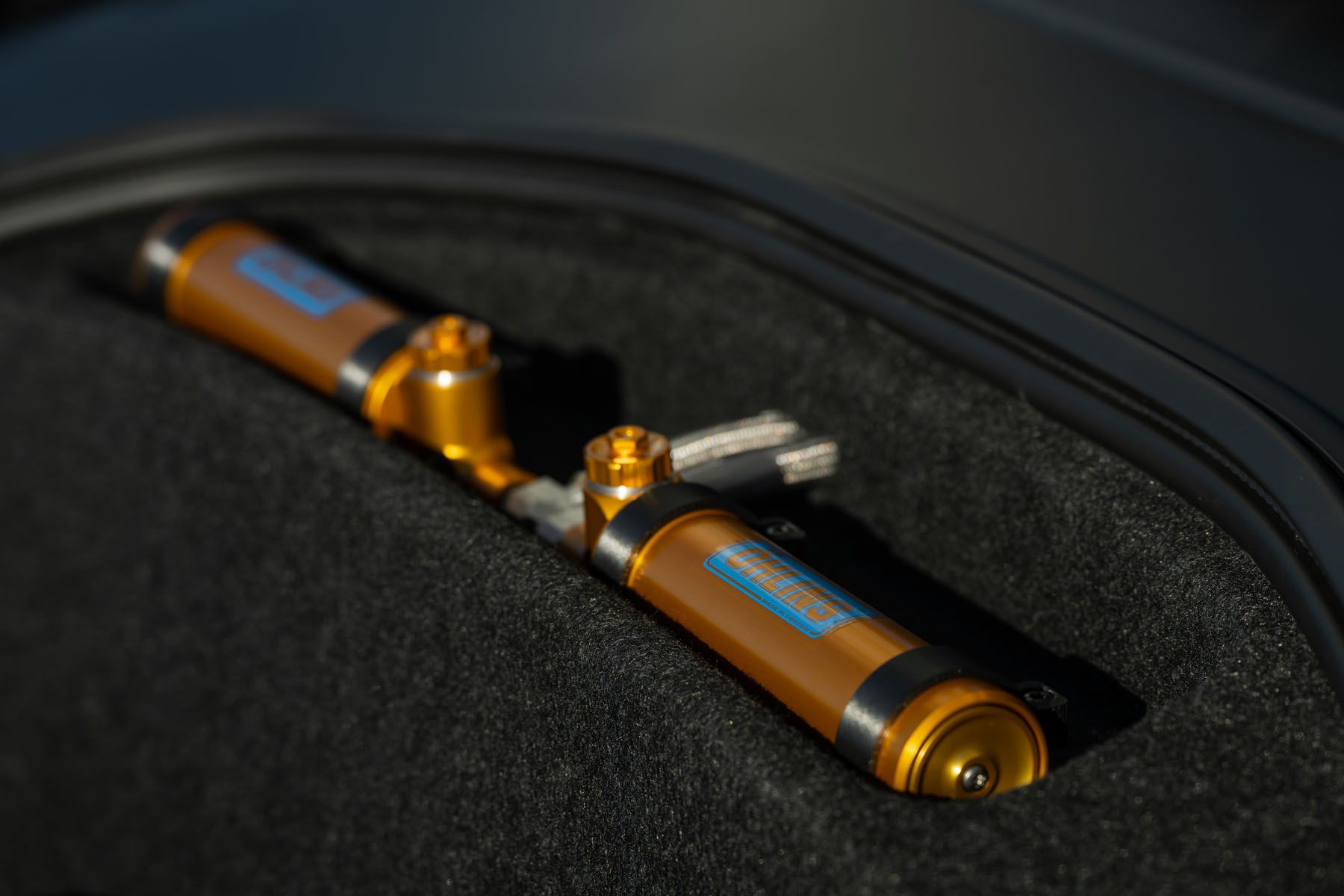
Making the change to a firmer set-up suited the car far more on the smooth tarmac of the Ascari circuit, while stiffening up the back even further improved rotation into and out of corners. We still detected a hint of nose lift under power, though, so opted to stiffen the front-end rebound to control the pitch on the front end. Finally, softening off everything to 10-10,10 (the higher the number, the softer the setting), showed the variation in the dampers as the whole car rolled far more through every shift of weight, yet did offer better all-round grip and stability in the wet.
In isolation, the limited-edition Polestar 2 BST Edition 270 isn’t going to change the landscape of electric performance cars overnight. Its build numbers are strictly limited to 270 and at almost £70k it’ll only be attainable to a lucky few. However, as the EV power race spirals out of control, Polestar’s mission to look beyond power and 0-60 figures needs to be commended.
Being able to adjust the handling characteristics by getting out the car and turning a dial brings a tangible, physical element to the driving experience at a time when pre-set drive modes on a touch screen threatened to take it away. Sure, it’s not perfect but the idea is sound and worth pursuing if we want to ensure that the joy of a fast car comes down to more than just numbers on an online configurator.
Polestar 2 review: verdict
The Polestar 2 electric car is quite an achievement. Volvo decided to spin off the company as a standalone unit to rival Tesla – a progressive, performance brand highly attuned to the zeitgeist. And those values feel on point right now, as we all question our way of living in these post-pandemic times and we predict positive interest in Polestar’s vegan interiors, clean-fuel EV status and focus on low environmental impact.

We let a couple of CAR magazine readers loose on our car to hear their thoughts, too. Rob Aherne (far left) and Will Kinnear (far right) are both in the market for an electric car and both rated the 2 highly. ‘It’s premium without being OTT – a slice of everyday luxury,’ Rob told author Tim Pollard (middle, below). ‘I like how its technology is understated, they have resisted overcomplicating it. It is a very purposeful EV: I like the fact you can just get in with the key in your pocket and drive away.’
Will concurs. ‘It’s lovely to drive. I’d have one in a heartbeat, if the numbers were right – but really I want an electric estate car. The 2 doesn’t have enough space inside for me, but I think it’s more attractive than a Tesla. I prefer the more traditional, European style to the Tesla’s George Jetson design.’
The 2 scores more highly than the Tesla Model 3 on quality and many will prefer the reassurance of an established parent company, but Polestar can’t match Elon Musk’s proprietary Tesla Supercharger charging infrastructure and evangelical following. Which would we pick? The Polestar 2 is a more mature product (despite hailing from a brand even newer than Tesla) and delighted us with its interior, the Performance Pack’s slick drive and all-round package.
Pick the Tesla if you want a greater choice of powertrains, range and price – not to mention outright performance and an own-brand charging network – but the Polestar will be a more exclusive, intelligent purchase and one that we’d back long-term to make proper inroads into the growing EV marketplace.
Polestar 2 vs Tesla Model 3 vs Audi Q4 e-Tron vs Hyundai Ioniq 5